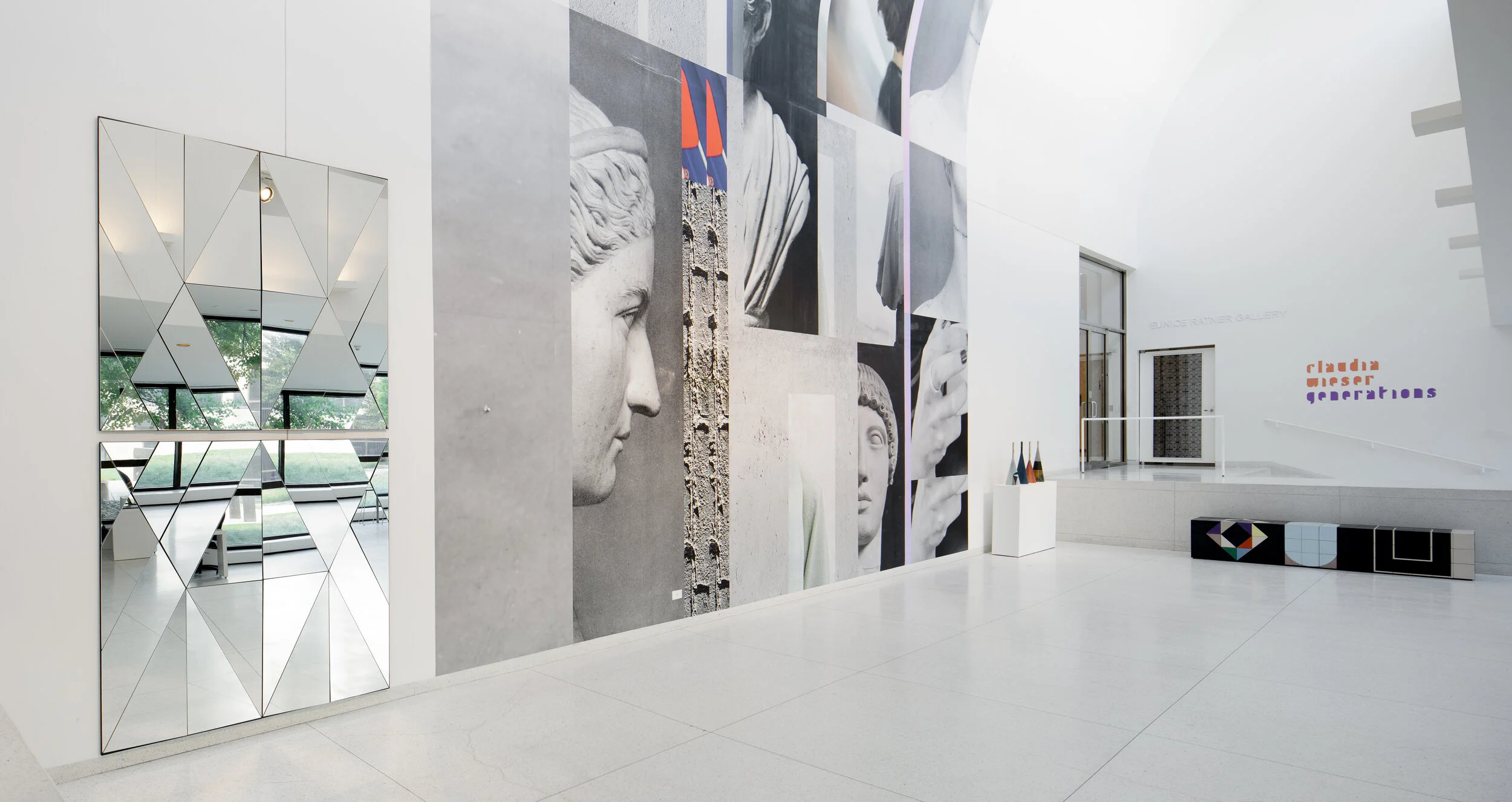Claudia Wieser’s Theatre of the Abstract, Mystical and Optical at the Smart Museum
Claudia Wieser: Generations, installation view at the Smart Museum of Art, 2020. Photo: Eat Pomegranate Photography. Art© ClaudiaWieser.
Claudia Wieser’s Theatre of the Abstract, Mystical and Optical at the Smart Museum
by Jad Dahshan
Quietly, an ancient chorus of cascading forms, conic figures, and gleaming orbs unfolds at the Smart Museum. The shadowy impressions of the natural world tease and vanish; gargantuan ghosts stare silently, knowingly. Vision spills through the galleries like light, stirring landscapes, birthing echoes, chasing epiphanies.
On view digitally at the Smart until the 13th of December, Claudia Wieser: Generations is a 7-year survey of the Berlin-based artist’s multifoliate oeuvre, curated by Jennifer Carty, Associate Curator of Modern & Contemporary Art at the Smart Museum, and Rachel Adams, Chief Curator and Director of Programs at the Bemis Center for Contemporary Arts. In her work, cultural and artistic histories, both ancient and modern, are refracted through a present that erupts with movement, contemplative quiet, and spiritual possibility. Working across materials and media , Wieser responds to the Smart Museums’ architecture to create an immersive experience.
Claudia Wieser,Untitled, 2020, Wallpaper. Courtesy of the artist and Marianne Boesky Gallery, New York and Aspen. © Claudia Wieser.
Generations begins in the Smart Museum's lobby, where a large swath of wallpaper covers the high, arching wall, looming over visitors. Drawn from Wieser’s expansive archive, the wallpaper employs a modern design language to splice photos of Greek and Roman sculptures with imagery from the 1976 BBC series “I, Claudius.” The wallpaper ignores a linear sense of history to marry the ancient and contemporary, highlighting the humanistic themes that endure through both. It also sets the stage for the visitor’s own foray into this existential drama.
Hanging in the lobby is one of several mirror works, the pieces of which are arranged into a geometrical pattern that reflects a fragmented image of the viewer -a stacking technique Wieser borrows from Art Deco architect Robert Mallet-Stevens. These reflective works confront the onlooker both with their role as an observer as well as with their startling smallness in contrast to the blown-up faces of classical statues in the wallpaper. Working in tandem with the wallpaper these pieces recast the visitor as an active agent in the exhibition. The viewer is now the protagonist in the exhibition, existing within a theatre of shifting perspectives, dynamic geometries, and rousing ruminations. In doing so, "Generations" allows the view to “narrate more than concrete material and forms you can see.” Such architectural interventions also distemper the assumed neutrality of the museum’s ‘white cube’ aesthetic, transforming the gallery space into a more dynamic and complex environment.
Claudia Wieser,Untitled, 2020, Wallpaper. Courtesy of the artist and Marianne Boesky Gallery, New York and Aspen. © Claudia Wieser.
Moving through this optical theatre, viewers come across abstract renderings on colored paper, some of them incorporating gold leaf. These drawings take inspiration from seminal artists like Hilma af Klint and Emma Kuntz, who worked during the late 18th and early 19th Centuries. The former, a Swedish painter and theosophist, led an artistic practice informed by spiritualist practices such as seances. The latter, a healer and artist, made use of her abstract art practice in sessions with patients to guide meditation. The influence of spirituality as an integral component of their aesthetic strategy radiates through Wieser's drawings as well.
As evidenced in the breadth of mediums shown in the exhibition, an interdisciplinary legacy persists through Wieser's work. Besides being influenced by the Bauhaus, a modernist applied art and design school in early 20th Century Germany, Wieser apprenticed as a blacksmith at Bergmeister Kunstshmiede for four years early in her career. The confluence of fine and applied art in the Modernist designs Bergmeister Kunstshmiede produced, foregrounds that of her current practice. Wieser’s work unsettles the borders imagined between the fields of art, design, craft, and architecture.
Claudia Wieser: Generations, installation view at the Smart Museum of Art, 2020. Photo: Eat Pomegranate Photography. Art© ClaudiaWieser.
Wieser's intimate and meticulous knowledge of materials, as well as her collaborations with other craftspeople, form the foundations of works on view in the exhibition. While inviting us to “look at ourselves looking,” the “theatrical conceptualist” Wieser follows pictorial traditions of mysticism and traces histories of popular culture as she forces us to face ancient questions of life, love, and death that can only be expressed in abstract forms and moving environments. She expands the spiritual possibilities of geometric abstraction beyond the horizons of 2-dimensional work, creating an all-encompassing, theatrical, and contemplative experience for viewers.




